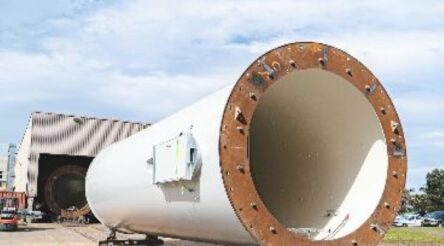How to advance Australian manufacturing – by Ishan Galapathy

Ishan Galapathy spent 2020 looking at the fundamental issues facing Australian manufacturing and our elusive pathway to operational excellence (OpEx). Here he gives a taste, from his latest book, of what he learned.
One key thing the year 2020 highlighted was the importance of global supply chains and local manufacturing.
The solution for Australia is to manufacture on-shore, reversing the off-shoring trends seen in the last couple of decades.
But are we too late? Can we actually reverse the situation and get Australian manufacturing back in a prime position?
There are fundamental process gaps in many of our manufacturing businesses preventing them from delivering their true potential, capacity and capability.
In fact I wrote my latest book ADVANCE: 12 Essential Elements to Supercharge Productivity & Profitability, amidst the 2020 global description to address this gap.
There is substantial capacity being lost through waste and inefficiencies.
While the solution to this problem requires starting a journey to improve performance year-on-year and reducing costs, there are a few hurdles that prevent many Aussie businesses from succeeding in such a journey.
The common approach to automate everything and anything to reduce costs simply isn’t working – this is clearly evident by the findings published in The State of Supply Chain Management Report 2020 by the Australasian Supply Chain Institute (ASCI).
The report shows that the overall supply chain maturity score in 2019 (out of 100) had dropped six percentage points to 46 compared with 2018, despite tremendous advancements in technology and automation.
Too many business leaders get stuck in the day-to-day, without being able to focus on the strategic imperatives… and cost cutting and cost reductions are very different approaches.
Getting started on an OpEx journey shouldn’t be difficult – we just need to address four fundamental paradigms:
Paradigm 1. Peak versus Hills: How can leaders draw inspiration from Sir Edmund Hillary’s quest to conquer the highest peak on earth – Mount Everest? How do you embark on such a (metaphorical) journey successfully with your teams on board?
Paradigm 2. Elephants versus Turtles: Let’s learn from nature on how to solve critical problems. We try to do too much, and end up not doing very much at all. Are you laying turtle eggs or nurturing elephant calves?
Paradigm 3. Signal versus Noise: With so many daily distractions, what clear signals do your team use to track progress effectively? Do they need to be as clever as cryptographer Alan Turing?
Paradigm 4. Sprint versus Marathon: Business is a marathon and we need our teams to be capable for the long-haul. However, many try to sprint the marathon, burning out and exhausting their teams.
Understanding these four paradigms can start you on your journey to improved accountability, integrated alignment with the strategic plan, and intensified awareness with key team members about effectively improving productivity year-on-year.
Ishan Galapathy has been a productivity expert, speaker and author in the manufacturing excellence space for 20 years. Recently he specialised in the food sector with companies such as Kellogg’s and Campbell Arnotts. You can download a free introductory overview of his book Advance: 12 essential elements to supercharge productivity and profitability here.
Picture: Ishan Galapathy
Subscribe to our free @AuManufacturing newsletter here.
@aumanufacturing Sections
Analysis and Commentary Awards Defence Manufacturing News Podcast Technology Videos










